Black Death skeletons unearthed by Crossrail project
- Published
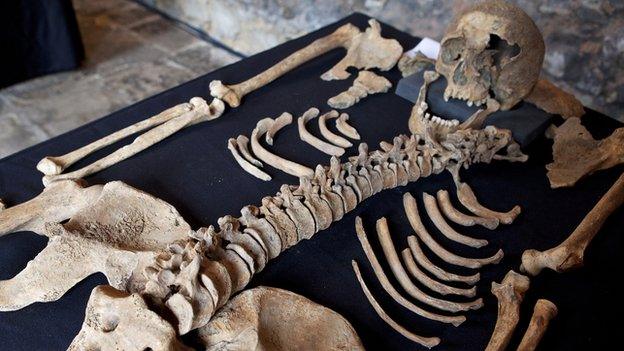
The plague victims' bones reveal clues to their harsh lives in medieval London
Skeletons unearthed in London Crossrail excavations are Black Death victims from the great pandemic of the 14th Century, forensic tests indicate.
Their teeth contain DNA from the plague bacterium Yersinia pestis and their graves have been dated to 1348-50.
Records say thousands of Londoners perished and their corpses were dumped in a mass grave outside the City, but its exact location was a mystery.
Archaeologists now believe it is under Charterhouse Square near the Barbican.
They plan to expand their search for victims across the square - guided by underground radar scans, which have picked up signs of many more graves.
Crossrail's lead archaeologist Jay Carver says the find "solves a 660-year-old mystery".
"This discovery is a hugely important step forward in documenting and understanding Europe's most devastating pandemic," he said.
"Further excavations will follow to see if - as we expect - we are coming across a much bigger mass burial trench."
James Morgan reports
Between 1347 and 1351 the "Great Pestilence" swept westward across Europe killing millions of people. It later became known as the Black Death.
It arrived on Britain's shores in 1348 and is believed to have wiped out up to 60% of the population at the time.
In London, two emergency burial grounds were dug outside the walls of the City. One has been found at East Smithfield, while the other is known to lie somewhere in Farringdon.
In March 2013, Crossrail engineers uncovered 25 skeletons in a 5.5m-wide shaft - alongside pottery dated to the mid-14th Century.
Samples from 12 of the corpses were taken for forensic analysis. In at least four cases, scientists found traces of the DNA of the Yersinia pestis, confirming they had contact with the plague prior to their death.
To pinpoint which historical plague outbreak the "Charterhouse 25" could have fallen victim to, the researchers used radio carbon dating.
They determined the burial ground was used in at least two distinct periods - the earliest within the Black Death in 1348-50, followed by a later outbreak in the 1430s.
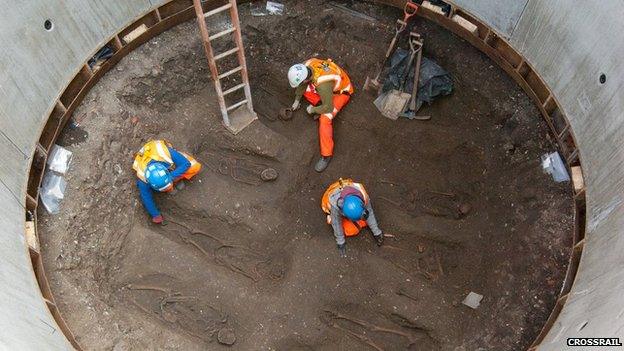
The bodies were found in a Crossrail shaft
In a bid to understand just how far the grave extends across the square, Crossrail approached the University of Keele to undertake a forensic geophysics survey - using ground-penetrating radar.
The initial scan detected signs of further burials across Charterhouse Square and also the foundations of a building - possibly a chapel.
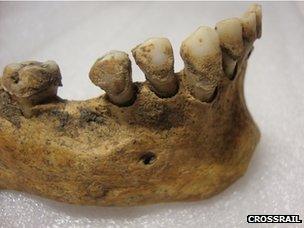
Traces of plague bacteria were found in the teeth of the skeletons
"We will undertake further excavations in Charterhouse Square later this year to confirm some of the results," said Mr Carver.
The skeletons provide a rare opportunity to study the medieval population of London, according to osteologist Don Walker, of the Museum of London Archaeology.
He said: "We can start to answer questions like: where did they come from and what were their lives like?
"I'm amazed how much you can learn about a person who died more than 600 years ago."
Analysis of the skeletons' bones and teeth indicates that:
Many of the skeletons appear to suffer signs of malnutrition and 16% had rickets.
There is a high rate of back damage and strain indicating heavy manual labour.
The later skeletons from the 1400s had a high rate of upper body injury consistent with being involved in violent altercations.
13 of the skeletons were male, three female, two children, the gender was undetermined in the other seven skeletons.
40% grew up outside London, possibly as far north as Scotland - showing that 14th Century London attracted people from across Britain just as it does today.
Mr Carver said: "We can see from the people here that Londoners weren't living an easy life.
"The combination of a poor diet and generally a struggle means they were very susceptible to the plague at that time and that's possibly one of the explanations for why the Black Death was so devastating."

Archaeologist Jay Carver hopes to explore more of the burial site
By sequencing the ancient bacterial DNA, researchers hope to understand how the plague has evolved and spread over the centuries.
Globally the infection still kills 2,000 people a year, including countries like Madagascar. Antibiotics are available, but if untreated the disease kills within four days.
Scientists hope to confirm whether the 14th Century strain was the grandmother of all plague that exists today.
The £14.8bn Crossrail project aims to establish a 118km-long (73-mile) rail link with 37 stations across London, and is due to open in 2018.
The excavations have already unearthed Roman skulls washed down a lost river, a Bronze-Age transport route, and the largest piece of amber ever found in the UK.
The latest announcement comes ahead of a Channel 4 documentary, Return of the Black Death: Secret History, on 6 April, which follows the Charterhouse Square discovery.
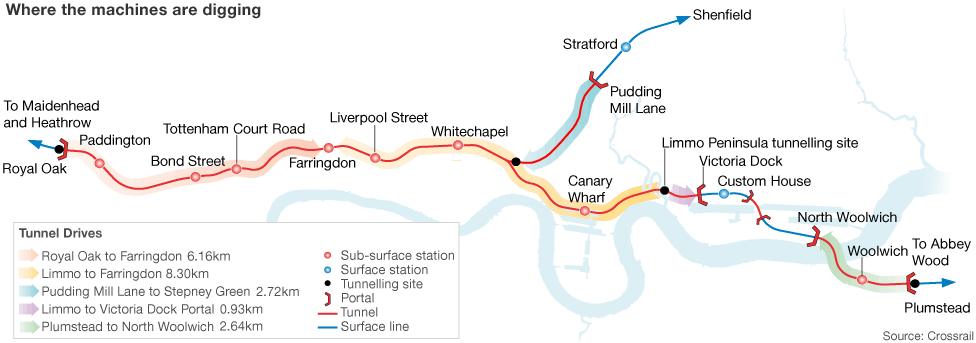
- Published30 March 2014

- Published28 January 2014
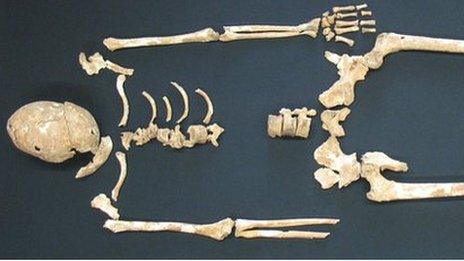
- Published10 October 2013

- Published12 October 2011

- Published5 October 2012
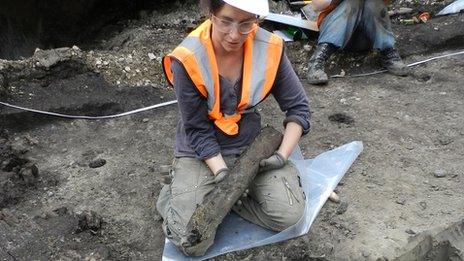
- Published24 December 2012

- Published2 October 2013
.jpg)